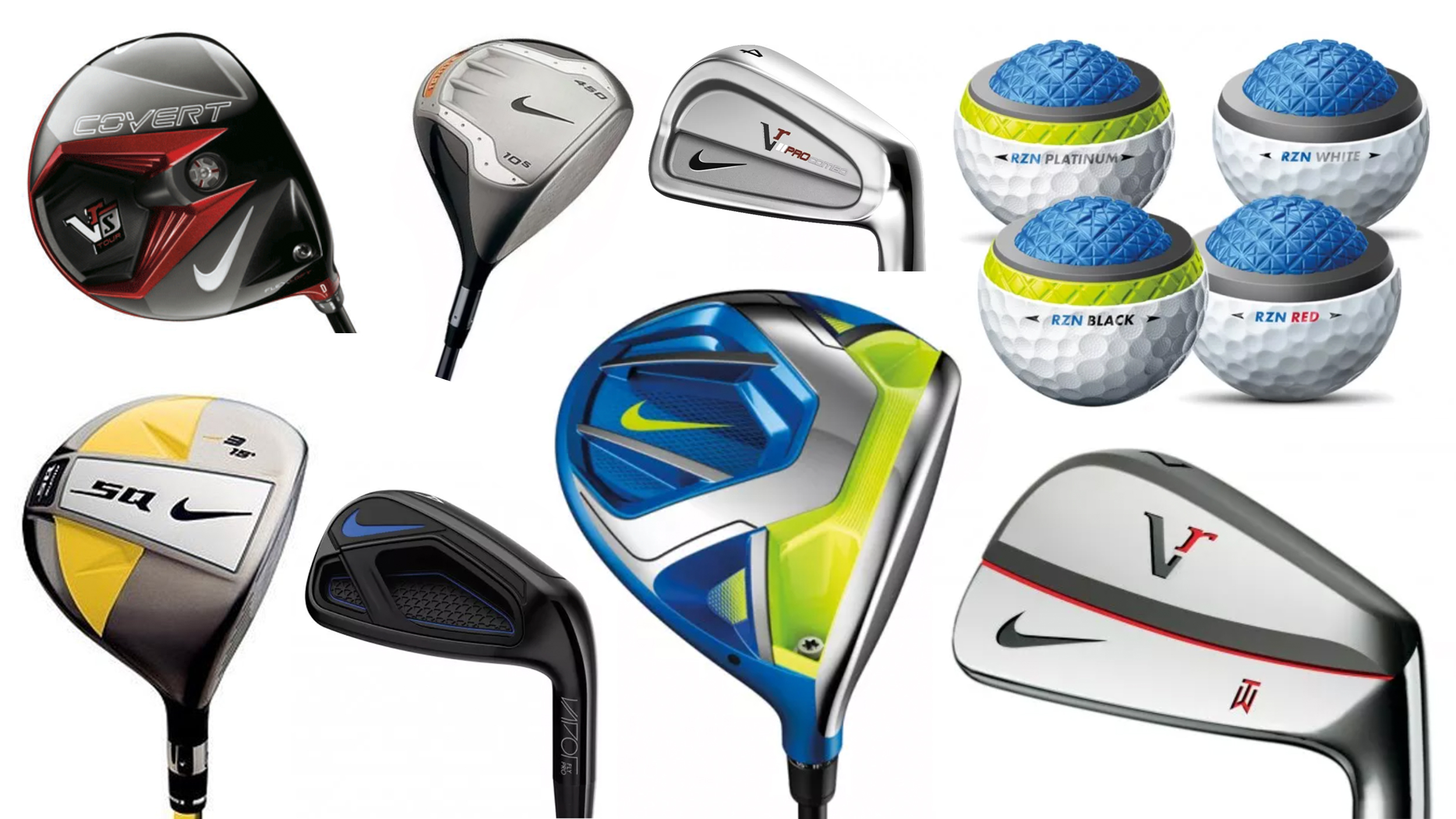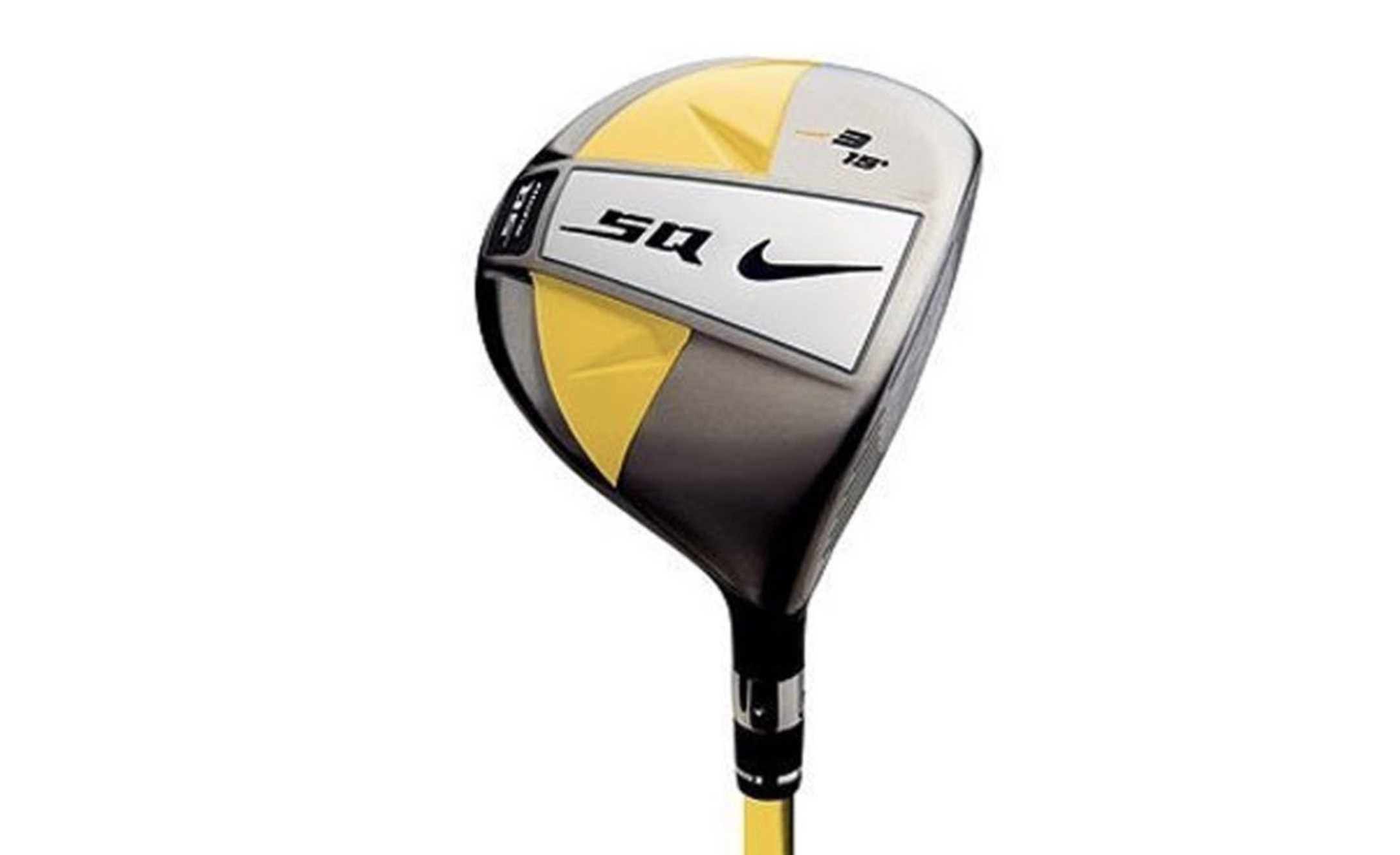
We look back through the archives and pick out the 10 best Nike golf clubs ever made
Following the dramatic news that Nike is to step away from club and ball making business in 2016, we picked out our favourite pieces of Nike golf equipment since the company first started making them back in 1998.
Nike was a relative newcomer to golf when it signed Tiger Woods in 1996 for a record $40m, five-year endorsement deal and his ‘Hello world’ line became world famous. It signalled the brand’s intent to move into hard goods, having already made golf shoes and apparel since the 1980s.
Nike’s clubs received some stick in their early years, famously from Phil Mickelson who claimed Tiger was using ‘inferior equipment’. But Woods won four straight majors after changing to the Tour Accuracy TW ball in 2000, became the first player in 30 years to win the Masters and US Open in the same year after changing to a Nike driver; and won a World Golf Championship in Ireland the week he switched to Nike irons. It wouldn’t appear his Nike equipment was holding him back.
The last ever Nike club launch, the Vapor Fly range, was a solid performer as good as anything else out there. During its 14-year tenure in the golf industry, the Nike brand created some excellent golf equipment. Here are 10 of the best Nike products ever made.
Nike VR TW Pro blades - 2008
Tiger Woods helped create this set that replaced the Nike blades he had used for over five years. The centre of gravity was positioned to Woods’ specs to provide added control and to aid shot shaping. The set has a slightly modified shape and thicker toe than the original Nike blade, which was well received by golfers.
Nike Vapor Fly driver - 2016
Distinguished by its bold blue crown with Volt color in the Compression Channel, the Nike Vapor Fly driver has three key technologies that are said to increase launch, distance and forgiveness while reducing spin. A lighter crown resulted in a lower center of gravity and higher MOI for higher launch, less spin and more forgiveness.
Another new feature is the HyperFlight face, which has been thinned out around the perimeter to minimize ball speed loss on off-centre hits. The Compression Channel seen on previous drivers has been re-engineered, creating a springboard effect to amplify performance on miss-hits.
Nike Precision Tour Accuracy TW ball - 2001
This ball caused quite a stir in 2000 when it was revealed the Tour Accuracy TW ball Tiger Woods used in competition was different to the version he promoted in Nike advertisements that was on sale to the public.
His version had a core and cover that was each 5 per cent firmer for a slightly lower ball flight with slightly less spin for his faster swing speed. The mass market Tour Accuracy ball was a non-wound, urethane covered ball that featured Dynafuse injection moulded technology.
Nike VR Forged Pro Combo irons - 2013
They looked like blades and offered similar feel and distance control, but with much more forgiveness built in. Arguably Nike’s best amateur better player combo set, the 3, 4, 5 and 6-irons featured a pocket cavity filled with a polymer Nike called ‘shot-making gel’ while the shorter clubs, from 7-iron through to pitching wedge, have split cavities, with the focus on shot precision.
High-frequency X3X grooves were designed to provide optimal spin.
Nike VR_S Covert driver - 2013
In an industry first, the back-middle section of this driver’s sole was removed in an effort to increase perimeter weighting for forgiveness and position the CG more forwards to reduce spin. It didn’t quite provide the feel golfers demanded but subsequent versions improved on this, right up to the Nike Vapor Fly driver launched earlier this year. It came in two versions, including the Tour version pictured above.
Nike SasQuatch Fairway wood - 2008

The legendary SQ fairway wood was a huge seller and popular on tour too. Tiger Woods still had them in the bag in 2010, and Charl Schwartzel used them to win The Masters in 2011.
The had a 'Monorail' sole to reduce drag and a face made from cryogenically tempered 'Cryo Steel' that was said to be thinner and stronger than Titanium for extra distance.
Nike T40 fairway wood - 2005
This was a cutting-edge fairway wood at the time because it featured a 40g tungsten plug inside the clubhead to lower the centre of gravity (CG) and increase the launch angle, which was much more tungsten than other manufacturers were using at the time.
Nike Ignite driver - 2004
As used by Tiger Woods in his early days, this driver featured a NexTi Titanium Face which Nike claimed was the hottest and strongest titanium ever created.
The NexTi face material allows for a head construction that results in an extremely wide COR or spring like effect. The original version of this driver would now be non-conforming to the rules of golf, it was that hot.
Nike RZN balls - 2011
Nike engineers first discovered in 2011 that they could make a ball core material that performed better than rubber. It was called RZN and went on to feature across many other different Nike product categories, including drivers.
There were four different RZN balls in 2016, the RZN Tour Platinum and RZN Tour Black for fast swingers and the RZN Speed White and RZN Speed Red for slower swing speeds. The core on the 2016 Nike RZN golf balls also had a Speedlock pattern that stop the balls’ layers slipping so they can compress more powerfully at impact, for more distance on mishit shots where you strike the ball with a glancing blow.
Rory McIlroy used the RZN Black in 2014 to win The Open and PGA Championship, his third and fourth Majors.
Nike Vapor Fly Pro irons - 2016
More compact than the Nike Vapor Fly irons, the progressive Vapor Fly Pro irons came with a black PVD finish aimed at both game improvers and better players. The now-legendary irons are still being used in 2023 by certain players in the 2/3 iron.
The set featured a modern muscle design that positions the centre of gravity (CG) in the middle of the face for added stability and a better feel at impact. It’s shape and size meant it offered more workability than a traditional game improvement iron.
The use of RZN material created lower and deeper weighting that encouraged a higher launch, and in turn, a steeper descent angle to help shots stop quicker.







